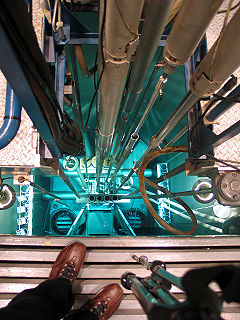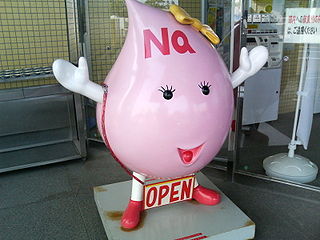 W
WB205 is the name of the Magnox nuclear reprocessing plant at Sellafield in northern England. This plant uses PUREX chemistry to extract plutonium and uranium from used nuclear fuel. The plant was originally constructed and operated by the United Kingdom Atomic Energy Authority (UKAEA), but in 1971 control was transferred to British Nuclear Fuels Limited (BNFL).
 W
WCadarache is the largest technological research and development center for energy in Europe including CEA research activities and ITER. CEA Cadarache is one of the 10 research centers of the French Commission of Atomic and Alternative Energies. Established in the French département Bouches-du-Rhône, close to the village Saint-Paul-lès-Durance, CEA Cadarache, created in 1959, is located about 40 kilometers from Aix-en-Provence, approximately 60 kilometres (37 mi) north-east of the city of Marseille and stands near the borders of three other départements: the Alpes de Haute-Provence, the Var and the Vaucluse. It is one of the major sources of employment in the Provence-Alpes-Côte d'Azur region (PACA) and has one of the heaviest concentrations of specialized scientific staff. Cadarache began its research activities when President Charles de Gaulle launched France's atomic energy program in 1959. The center is operated by the Commissariat à l'Énergie Atomique et aux énergies alternatives . In 2005, Cadarache was selected to be the site of the International Thermonuclear Experimental Reactor (ITER), the world's largest nuclear fusion reactor. Construction of the ITER complex began in 2007, and it is projected to begin plasma-generating operations in the 2020s. Cadarache also plays host to a number of research reactors, such as the Jules Horowitz Reactor, which is expected to enter operation around 2021.
 W
WIdaho National Laboratory (INL) is one of the national laboratories of the United States Department of Energy and is managed by the Battelle Energy Alliance. While the laboratory does other research, historically it has been involved with nuclear research. Much of current knowledge about how nuclear reactors behave and misbehave was discovered at what is now Idaho National Laboratory. John Grossenbacher, former INL director, said, "The history of nuclear energy for peaceful application has principally been written in Idaho".
 W
WIndira Gandhi Centre for Atomic Research (IGCAR) is one of India's premier nuclear research centres. It is the second largest establishment of the Department of Atomic Energy (DAE), next to Bhabha Atomic Research Centre (BARC), located at Kalpakkam, 80 km south of Chennai, India. It was established in 1971 as an exclusive centre dedicated to the pursuit of fast reactor science and technology, due to the vision of Dr. Vikram Sarabhai. Originally, it was called as Reactor Research Centre (RRC). It was renamed as Indira Gandhi Centre for Atomic Research (IGCAR) by the then Prime Minister of India, Rajiv Gandhi in December 1985. The centre is engaged in broad-based multidisciplinary programme of scientific research and advanced engineering directed towards the development of Fast Breeder Reactor technology, in India.
 W
WThe La Hague site is a nuclear fuel reprocessing plant at La Hague on the Cotentin Peninsula in northern France, with the Manche storage centre bordering on it. Operated by Orano, formerly AREVA, and prior to that COGEMA, La Hague has nearly half of the world's light water reactor spent nuclear fuel reprocessing capacity. It has been in operation since 1976, and has a capacity of about 1700 tonnes per year. It extracts plutonium which is then recycled into MOX fuel at the Marcoule site.
 W
WMadras Atomic Power Station (MAPS) located at Kalpakkam about 80 kilometres (50 mi) south of Chennai, India, is a comprehensive nuclear power production, fuel reprocessing, and waste treatment facility that includes plutonium fuel fabrication for fast breeder reactors (FBRs). It is also India's first fully indigenously constructed nuclear power station, with two units each generating 220 MW of electricity. The first and second units of the station went critical in 1983 and 1985, respectively. The station has reactors housed in a reactor building with double shell containment improving protection also in the case of a loss-of-coolant accident. An Interim Storage Facility (ISF) is also located in Kalpakkam.
 W
WMarcoule Nuclear Site is a nuclear facility in the Chusclan and Codolet communes, near Bagnols-sur-Cèze in the Gard department of France, which is in the tourist, wine and agricultural Côtes-du-Rhône region. The plant is around 25 km north west of Avignon, on the banks of the Rhone.
 W
WThe Nyongbyon Nuclear Scientific Research Center is North Korea's major nuclear facility, operating its first nuclear reactors. It is located in Nyongbyon County in North Pyongan Province, about 100 km north of Pyongyang. The center produced the fissile material for North Korea's six nuclear weapon tests from 2006 to 2017, and since 2009 is developing indigenous light water reactor nuclear power station technology.
 W
WThe Pakistan Atomic Research Reactor or (PARR) are two nuclear research reactors and two other experimental neutron sources located in the PINSTECH Laboratory, Nilore, Islamabad, Pakistan.
 W
WLake Karachay, located in the southern Ural Mountains in eastern Russia, was a dumping ground for the Soviet Union's nuclear weapon facilities. It was also affected by a string of accidents and disasters causing the surrounding areas to be highly contaminated with radioactive waste. Although the lake has an area much smaller than that of the Fukushima Daiichi Nuclear Power Plant, and albeit the fact that three settlements, Ozyorsk, Novogornyj and Tatysh some 7 kilometers away are inhabited and that the lake is surrounded by Mayak, the lake is still technically a natural area and thus has been described as the "most polluted spot on Earth" by Washington, D.C.-based Worldwatch Institute.
 W
WThe Power Reactor and Nuclear Fuel Development Corporation (PNC) or 動燃 for short, was a Japanese nuclear energy research organization established 2 October 1967 with the Atomic Fuel Corporation as its parent organization and disbanded 1998 to be restructured as Japan Nuclear Cycle Development Institute. The organization specialized in special Breeder reactors and the Advanced Thermal Reactor. It also owned a nuclear reprocessing facility and its activities included uranium exploration in Australia and disposal of high level waste.
 W
WThe Rokkasho Nuclear Fuel Reprocessing Facility is a nuclear reprocessing plant with an annual capacity of 800 tons of uranium or 8 tons of plutonium. It is owned by Japan Nuclear Fuel Limited (JNFL) and is part of the Rokkasho complex located in the village of Rokkasho in northeast Aomori Prefecture, on the Pacific coast of the northernmost part of Japan's main island of Honshu.
 W
WThe Savannah River Site (SRS) is a nuclear reservation in the United States in the state of South Carolina, located on land in Aiken, Allendale, and Barnwell counties adjacent to the Savannah River, 25 miles (40 km) southeast of Augusta, Georgia. The site was built during the 1950s to refine nuclear materials for deployment in nuclear weapons. It covers 310 square miles (800 km2) and employs more than 10,000 people.
 W
WSellafield is a large multi-function nuclear site close to Seascale on the coast of Cumbria, England. As of August 2020, activities at the site include nuclear fuel reprocessing, nuclear waste storage and nuclear decommissioning, and it is a former nuclear power generating site. The licensed site covers an area of 265 hectares and comprises more than 200 nuclear facilities and more than 1,000 buildings. It is Europe's largest nuclear site and has the most diverse range of nuclear facilities in the world situated on a single site.
 W
WThe Siberian Chemical Combine was established in 1953 in Tomsk-7 now known as Seversk, in the Tomsk Region as a single complex of the nuclear technological cycle for the creation of nuclear weapons components based on fissile materials. It is a subsidiary of TVEL.
 W
WThe West Valley Demonstration Project is a nuclear waste remediation site in West Valley, New York in the U.S. state of New York. The project focuses on the cleanup and containment of radioactive waste left behind after the abandonment of a commercial nuclear fuel reprocessing plant in 1980. The project was created by an Act of Congress in 1980 and is directed to be a cooperative effort between the United States Department of Energy and the New York State Energy Research and Development Authority.